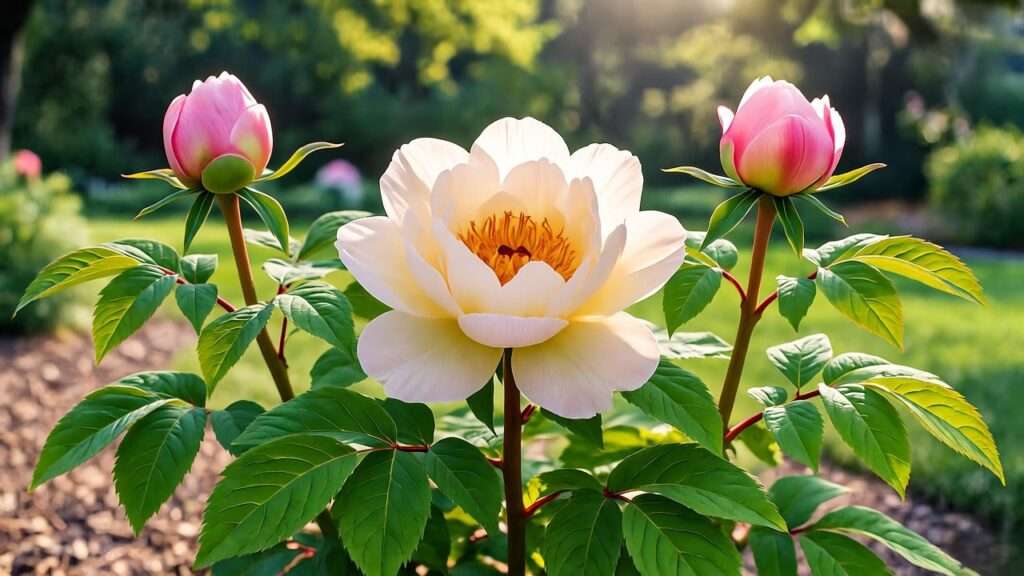Imagine stepping into your garden and being greeted by the soft, creamy-pink blooms of the Earth Angel Rose Plant, their delicate petals unfurling like a love letter from nature. These fragrant, peony-like roses aren’t just a feast for the eyes—they’re a gardener’s dream, blending timeless beauty with surprising resilience. Whether you’re a novice gardener or a seasoned rose enthusiast, this comprehensive guide will equip you with expert tips to grow and care for your Earth Angel Rose Plant, ensuring vibrant blooms that steal the show. From planting to pruning, we’ll cover every step to help you cultivate a thriving rose garden. Let’s dive in and unlock the secrets to stunning roses! 🌸
1. Understanding the Earth Angel Rose Plant 🌸
1.1 What Makes the Earth Angel Rose Special?
The Earth Angel Rose, a hybrid tea rose from the renowned Parfuma collection by Kordes Roses, is celebrated for its lush, double blooms that resemble peonies. Its creamy-pink petals, often tinged with soft apricot, exude a strong, sweet fragrance that fills the air. Growing to a compact 3–4 feet tall, this rose is perfect for small gardens, borders, or even containers. Its disease resistance sets it apart, making it easier to care for than many traditional roses. Gardeners love its long blooming season, from late spring to early fall, and its ability to thrive in various climates (USDA zones 5–9).
1.2 History and Origins
Bred by Kordes Roses in Germany, the Earth Angel Rose was introduced as part of the Parfuma collection, known for its focus on fragrance and beauty. This award-winning variety has earned accolades in international rose competitions, including the ADR Rose Trial, one of the toughest tests for rose resilience. Its popularity stems from its blend of old-world charm and modern disease resistance, making it a favorite among rose growers worldwide.
Expert Insight: “The Earth Angel Rose combines the elegance of heritage roses with the toughness needed for today’s gardens,” says Dr. Anna Kessler, a horticulturist with over 20 years of rose-breeding experience.
2. Planting Your Earth Angel Rose Plant 🌿
2.1 Choosing the Perfect Location
To ensure your Earth Angel Rose thrives, select a spot with 6–8 hours of direct sunlight daily. Roses love sun, and insufficient light can lead to weak growth and fewer blooms. Ensure good air circulation to prevent fungal diseases, and avoid planting near large trees or shrubs that compete for nutrients. For small spaces, consider growing your rose in a container or raised bed—its compact size makes it ideal for patios or balconies.
Common Mistake: Planting in shaded or waterlogged areas can stunt growth or cause root rot. Always check drainage before planting.
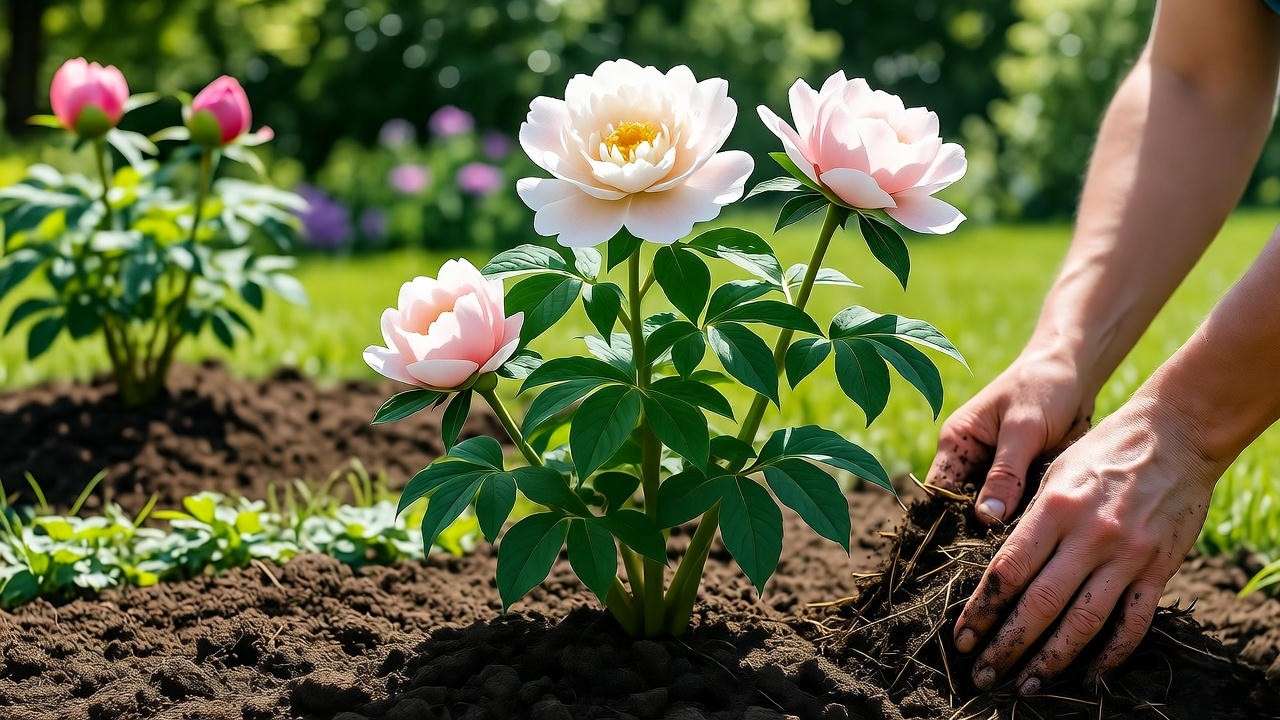
2.2 Soil Preparation and Requirements
Earth Angel Roses prefer well-drained, loamy soil with a pH of 6.0–6.5. Test your soil using a home pH kit (available at garden centers) or send a sample to your local extension service. Amend poor soil with organic matter like compost, aged manure, or peat moss to boost fertility and drainage.
Step-by-Step Soil Prep:
- Dig a hole 18 inches wide and deep.
- Mix extracted soil with 25–30% organic matter.
- Add a handful of bone meal or superphosphate to promote root growth.
- Refill the hole partially, ensuring the soil is loose and aerated.
2.3 When and How to Plant
The best time to plant Earth Angel Roses is in spring or fall, when cooler temperatures help roots establish. Bare-root roses are ideal for early spring, while potted roses can be planted anytime during the growing season.
Planting Instructions:
- Soak bare-root roses in water for 6–12 hours before planting.
- Dig a hole twice as wide as the root system and deep enough to keep the graft union (the swollen part where the rose is grafted onto rootstock) just above soil level.
- Place the rose in the hole, spreading roots evenly.
- Backfill with amended soil, firming gently to eliminate air pockets.
- Water deeply to settle the soil, adding more if needed.
Pro Tip: Space plants 2–3 feet apart to ensure air circulation and room for growth. For containers, choose a pot at least 15–20 gallons with drainage holes.
3. Essential Care Tips for a Thriving Earth Angel Rose 🌼
3.1 Watering Needs
Earth Angel Roses need 1–2 inches of water per week, depending on climate and soil type. Deep watering encourages strong root systems, so aim for infrequent but thorough sessions. Water at the base, not overhead, to keep foliage dry and reduce disease risk.
Signs of Watering Issues:
- Overwatering: Yellowing leaves, soggy soil, or root rot.
- Underwatering: Wilting, drooping leaves, or dry, cracked soil.
Adjust watering based on weather—more during hot, dry spells and less during rainy periods. Mulching with 2–3 inches of organic mulch (e.g., bark or wood chips) helps retain moisture and regulate soil temperature.
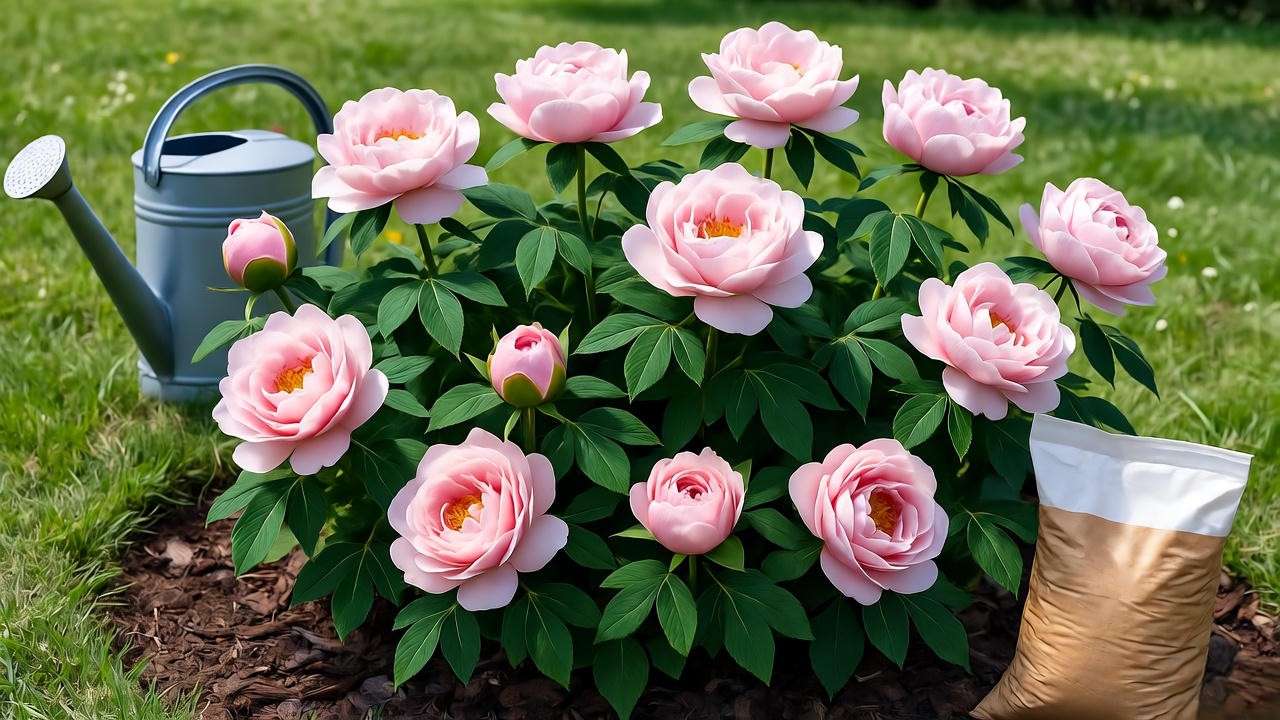
3.2 Fertilizing for Vibrant Blooms
Fertilizing is key to abundant, healthy blooms. Use a balanced fertilizer (10-10-10) or a rose-specific formula with higher phosphorus (e.g., 5-10-5) to promote flowering.
Fertilizing Schedule:
- Early Spring: Apply fertilizer as new growth begins.
- Mid-Season: Reapply every 4–6 weeks during the blooming season.
- Late Summer: Stop fertilizing to avoid stimulating new growth before winter.
Organic options like compost tea, fish emulsion, or bone meal are excellent for eco-conscious gardeners. Always water thoroughly after fertilizing to prevent root burn.
3.3 Pruning and Deadheading
Pruning keeps your Earth Angel Rose healthy and shapely. The best time to prune is in early spring, just as buds begin to swell.
Pruning Guide:
- Use clean, sharp pruning shears to avoid spreading disease.
- Remove dead, damaged, or crossing branches.
- Cut back healthy stems by one-third, making angled cuts just above outward-facing buds.
- Maintain an open, vase-like shape for air circulation.
Deadheading: Remove spent blooms regularly to encourage continuous flowering. Snip just above a five-leaflet leaf set to promote new growth.
Case Study: Jane, a home gardener in Oregon, doubled her Earth Angel’s blooms by adopting a consistent pruning routine. “I was hesitant to cut back so much, but it made all the difference,” she says.
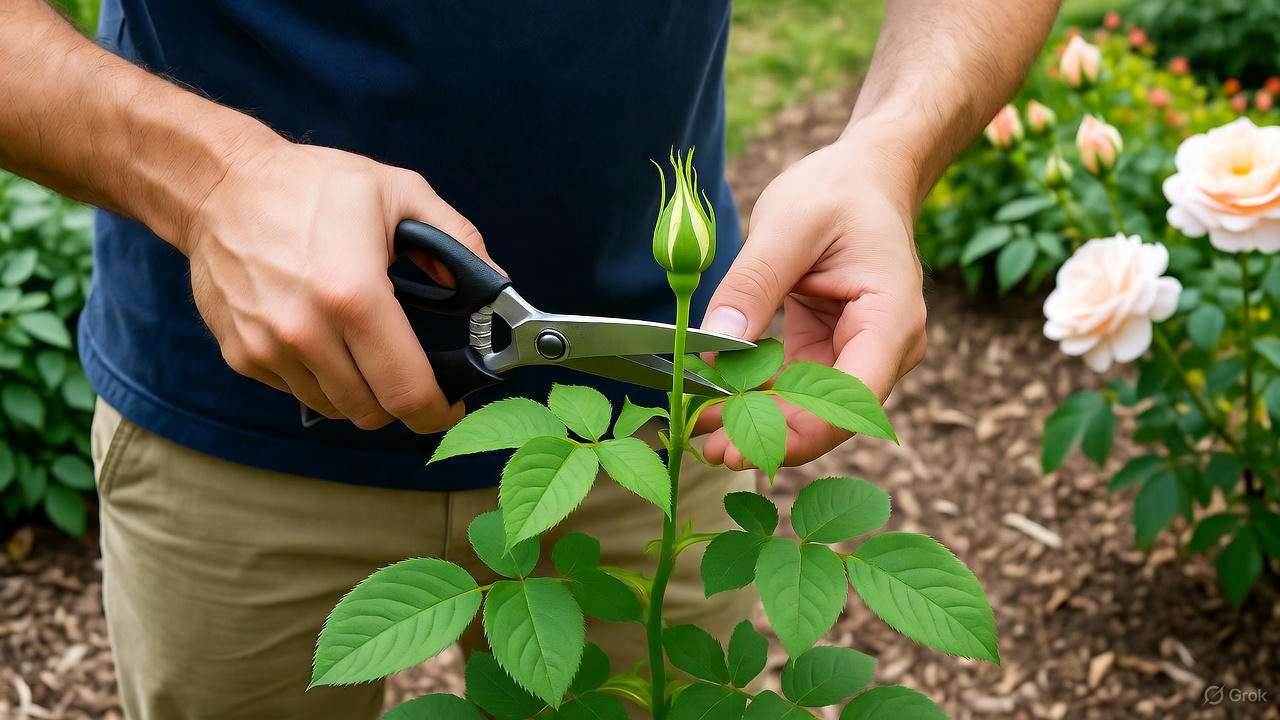
4. Protecting Your Earth Angel Rose from Pests and Diseases 🐞
4.1 Common Pests
Despite its disease resistance, Earth Angel Roses can attract pests like aphids, spider mites, and Japanese beetles.
Control Methods:
- Organic: Spray neem oil or insecticidal soap weekly until pests are gone. Introduce ladybugs or lacewings as natural predators.
- Chemical: Use targeted pesticides sparingly, following label instructions.
- Prevention: Plant companions like marigolds or garlic to deter pests naturally.
Regularly inspect leaves and stems for early signs of infestation, such as sticky residue or webbing.
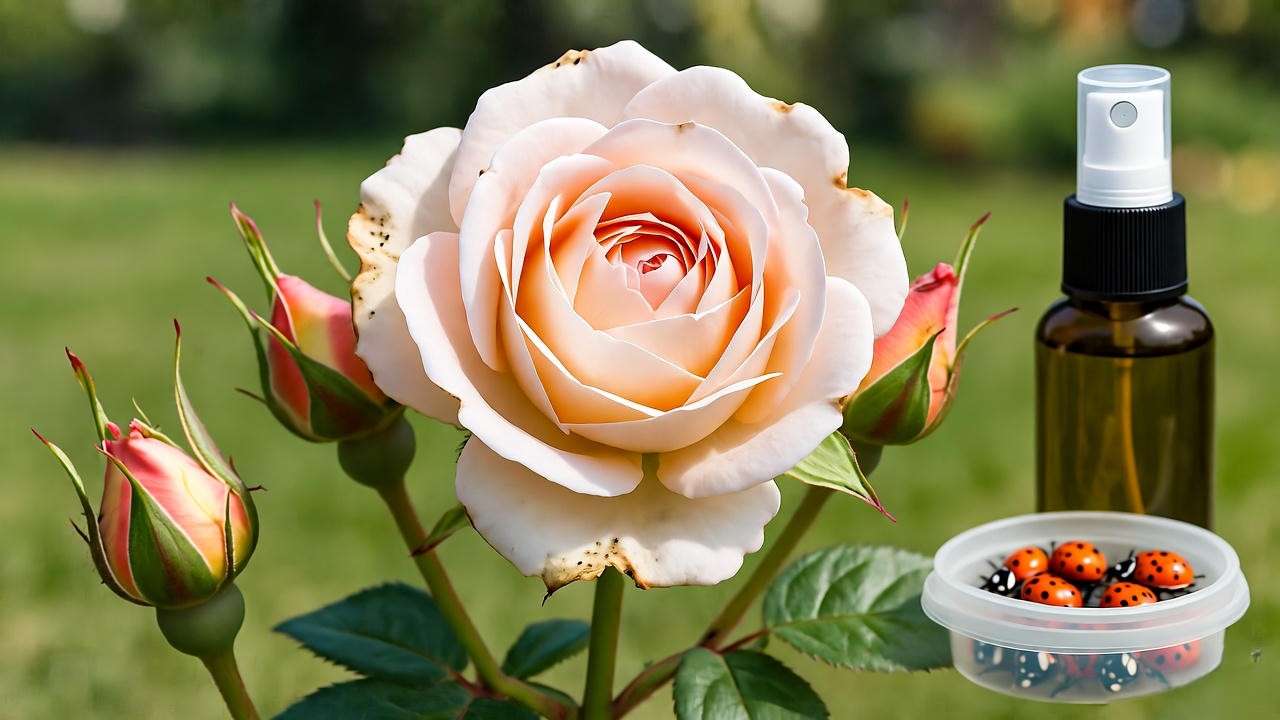
4.2 Disease Management
Earth Angel Roses are bred for resistance to black spot, powdery mildew, and rust, but no rose is immune.
Common Diseases:
- Black Spot: Dark spots on leaves, leading to yellowing and leaf drop.
- Powdery Mildew: White, powdery coating on leaves and buds.
- Rust: Orange pustules on leaf undersides.
Prevention and Treatment:
- Ensure good air circulation by proper spacing and pruning.
- Remove fallen leaves to reduce disease spread.
- Apply fungicides (e.g., sulfur-based) at the first sign of trouble, following local guidelines.
Expert Insight: “Prevention is better than cure,” says Dr. Maria Lopez, a plant pathologist. “Keep your roses stress-free with proper care, and diseases will be less likely to take hold.”
5. Seasonal Care for Year-Round Beauty 📅
5.1 Spring Care
Spring is the season of renewal for your Earth Angel Rose Plant. As temperatures warm and buds swell, focus on preparing your rose for a vibrant growing season.
- Mulching: Apply a 2–3 inch layer of organic mulch (e.g., shredded bark or compost) around the base to retain moisture and suppress weeds.
- Fertilizing: Kickstart growth with a balanced or rose-specific fertilizer as new shoots appear.
- Inspection: Check for winter damage, such as cracked stems or discolored leaves, and prune as needed.
Encourage strong blooms by ensuring consistent watering and monitoring for early pest activity.
5.2 Summer Maintenance
Summer brings peak blooming, but heat and drought can stress your Earth Angel Rose.
- Watering: Increase watering during hot spells, aiming for deep, infrequent sessions to keep roots hydrated.
- Heat Stress: Provide temporary shade (e.g., shade cloth) during extreme heatwaves to prevent leaf scorch.
- Pest and Disease Checks: Inspect weekly for aphids, spider mites, or powdery mildew, as warm weather can exacerbate these issues.
Regular deadheading during summer ensures continuous blooms and keeps the plant tidy.
5.3 Fall and Winter Prep
As the growing season winds down, prepare your Earth Angel Rose for dormancy to ensure it survives winter and thrives next spring.
- Reduce Watering: Gradually decrease watering as temperatures cool to avoid soggy soil.
- Stop Fertilizing: Cease fertilization by late summer to prevent tender new growth that could be damaged by frost.
- Winter Protection: In colder climates (USDA zones 5–6), mound soil or mulch 8–12 inches high around the base to insulate roots. For potted roses, move containers to a sheltered area or indoors.
Quick Tip: Create a seasonal care calendar to stay on track:
- Spring: Mulch, fertilize, prune.
- Summer: Water deeply, deadhead, monitor pests.
- Fall: Reduce care, prepare for dormancy.
- Winter: Insulate and protect.
6. Troubleshooting Common Earth Angel Rose Problems 🔧
Even with the best care, issues can arise. Here’s how to diagnose and fix common problems with your Earth Angel Rose Plant.
- Yellowing Leaves:
- Cause: Nutrient deficiency (often nitrogen), overwatering, or poor drainage.
- Solution: Test soil pH and nutrient levels; adjust watering and apply a balanced fertilizer.
- Few or No Blooms:
- Cause: Insufficient sunlight, improper pruning, or nutrient imbalance.
- Solution: Ensure 6–8 hours of sun, prune correctly in spring, and use a phosphorus-rich fertilizer.
- Drooping or Wilting:
- Cause: Underwatering, root damage, or heat stress.
- Solution: Check soil moisture, water deeply, and inspect roots for rot or pests.
Troubleshooting Table:
| Symptom | Possible Cause | Solution |
|---|---|---|
| Yellow leaves | Nutrient deficiency, overwatering | Test soil, adjust watering, fertilize |
| No blooms | Lack of sun, wrong pruning | Relocate plant, prune in spring |
| Wilting | Underwatering, root issues | Deep water, check roots |
If problems persist, contact your local cooperative extension service for tailored advice.
7. Enhancing Your Garden with Earth Angel Roses 🌺
7.1 Companion Planting Ideas
Earth Angel Roses shine in mixed gardens. Pair them with companion plants that enhance beauty and deter pests:
- Lavender: Adds fragrance and repels aphids.
- Catmint: Attracts pollinators and complements rose colors.
- Salvia: Provides vibrant contrast and deters deer.
Design Tip: Create a rose-focused garden bed with Earth Angel Roses as the centerpiece, surrounded by low-growing companions for a layered effect.
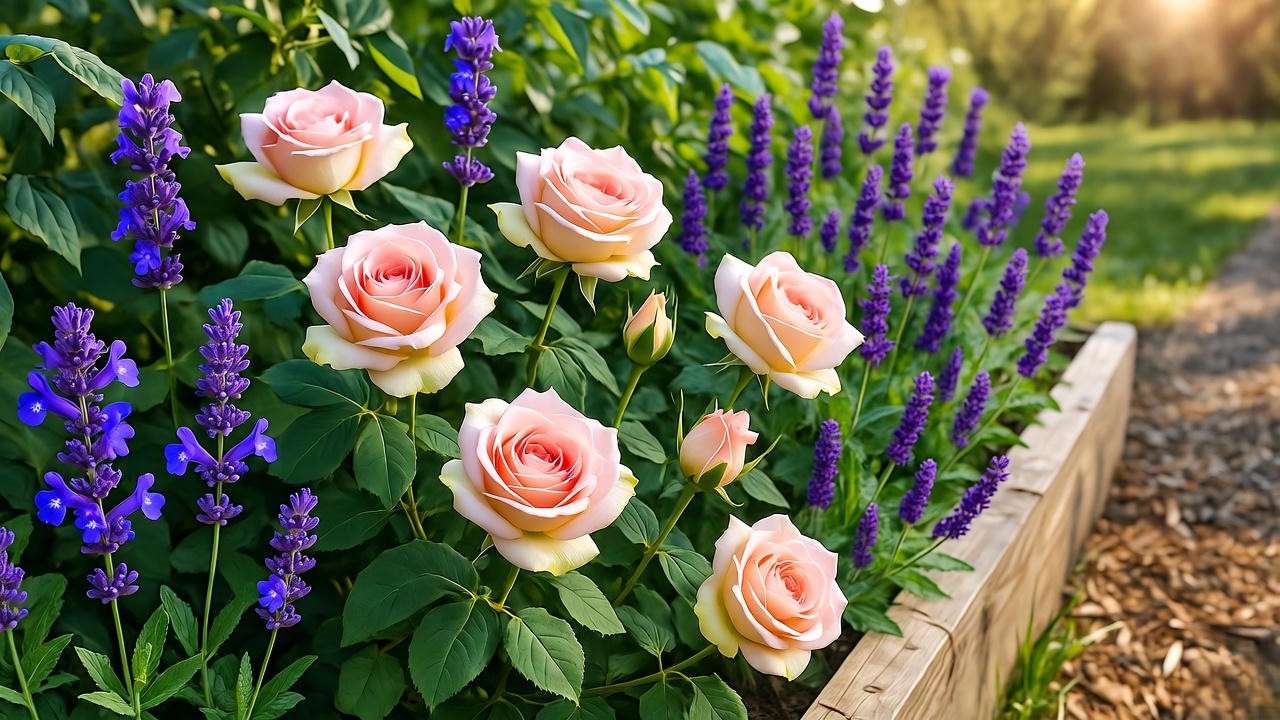
7.2 Using Earth Angel Roses in Containers
For small spaces or urban gardens, Earth Angel Roses thrive in containers.
- Container Choice: Use a 15–20 gallon pot with drainage holes to accommodate roots.
- Soil Mix: Blend potting soil with compost and perlite for drainage.
- Placement: Position on patios or balconies with ample sunlight, and rotate occasionally for even growth.
Tip: Elevate pots on wheels for easy movement and to enhance garden aesthetics.
7.3 Creative Uses for Blooms
Earth Angel Roses aren’t just for the garden—they’re perfect for creative projects.
- Bouquets: Cut blooms early in the morning when they’re freshest. Place in water immediately and remove lower leaves to extend vase life.
- Drying: Hang blooms upside down in a dry, dark place for 2–3 weeks to preserve for crafts or decor.
- Potpourri: Combine dried petals with essential oils for a fragrant homemade potpourri.
Inspiration: Picture a romantic garden scene with Earth Angel Roses spilling over a trellis, paired with lavender and salvia, or a chic patio display with potted roses in terracotta containers.
8. FAQs About Earth Angel Rose Plant Care ❓
Q: How often should I water my Earth Angel Rose?
A: Water 1–2 inches per week, adjusting for weather. Deep, infrequent watering is best.
Q: Can Earth Angel Roses grow in partial shade?
A: They prefer full sun (6–8 hours). Partial shade may reduce blooms and weaken growth.
Q: What’s the best fertilizer for Earth Angel Roses?
A: Use a balanced 10-10-10 or rose-specific fertilizer with higher phosphorus for blooms.
Q: How do I protect my roses from winter frost?
A: Mound soil or mulch around the base, or move potted roses to a sheltered area.
Q: Why are my Earth Angel Rose leaves turning yellow?
A: Yellowing often indicates overwatering or nutrient deficiency. Test soil and adjust care.
9. Conclusion: Your Path to Stunning Earth Angel Roses 🌟
Growing a thriving Earth Angel Rose Plant is within your reach with the right care. By choosing the perfect planting spot, maintaining consistent watering and fertilizing, pruning thoughtfully, and protecting against pests and diseases, you’ll enjoy stunning, fragrant blooms all season long. Whether you’re adorning your garden, patio, or home with these roses, their beauty will reward your efforts. Start your journey today, and share your success stories with fellow gardeners using #EarthAngelRose on social media. For more rose care tips or garden inspiration, explore our related articles on rose varieties and garden design. Happy gardening! 🌸

